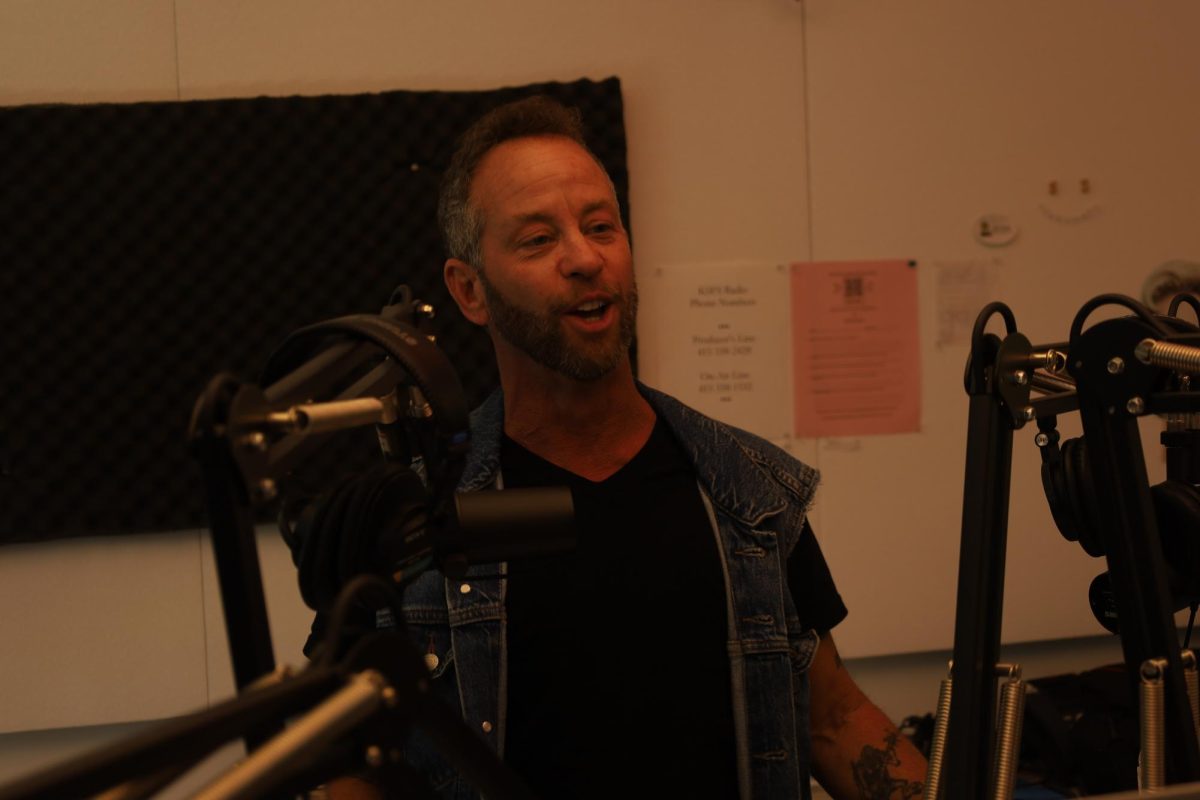As Darien Lum walked out of his Oct. 17, 1989 meeting at SF State with his fraternity Phi Kappa Tau, the ground began to shake. At the 19th Avenue and Holloway Street intersection, power was out and traffic was bumper to bumper, drivers yelling out their windows. In the face of the chaos, Lum did the unexpected: he walked out into the middle of traffic.
Lum and a couple of his fraternity buddies, in shorts and t-shirts, spent the next three hours directing traffic. As drivers passed Lum, they rolled down their window and said, “Thank you, thank you.”
“We all just wanted to help and it was a time of need for people” said Lum, who graduated from SF State in 1990. “We felt a sense of community.”
Only minor damages were reported on the SF State campus, except for the library and Verducci Hall, a residence hall which has since been destroyed, which closed for a month after the earthquake and left 728 students without a home, according to the Earthquake Edition of the Golden Gater. The library lost 20 to 30 percent of its shelves, with hundreds of books on the ground.
“We didn’t realize it was a big thing, we thought it was just another earthquake because living in San Francisco, you accept them,” said Ghassan Tarakji, an engineering professor who taught an afternoon class in Thornton Hall when the walls began to shake for what seemed like much longer than 15 seconds.
The Loma Prieta earthquake resulted in 63 deaths, 3,757 injuries and an estimated $6 billion in property damage, according to the U.S. Geological Survey. The earthquake originated at the Loma Prieta Peak in Santa Cruz, but the majority of property damage occurred in both San Francisco and Oakland areas, according to the Bay Area Earthquake Alliance.
In Oakland, parts of the double-decker Cypress Street Viaduct collapsed, taking 42 lives.
Striking the Bay Area just minutes before the Oakland A’s and the San Francisco Giants were set to begin Game 3 of the World Series, the earthquake was dubbed the “World Series Quake.”
Buildings in the Marina District, built on landfill and to older codes, received the most damage in the city, according to Tarakji, who has a Doctor of Philosophy in civil engineering.
“We are in a much better position than we (were) at that time,” said Tarakji. “But there’s a lot of work to still be done.”
Since 1989, all construction or retrofits at SF State adhere to the latest seismic requirements per the California Building Code, according to Wendy Bloom, campus planner for Capital Planning, Design & Construction.
The dining center, library, parking garage, Burk and Hensil Halls and the Ethnic Studies & Psychology, Health and Social Sciences and Administration Buildings have all undergone seismic retrofitting in the last 25 years. The library underwent a major seismic retrofit in 2012 after its renovation, along with the Lot 20 parking garage in the same year, according to Bloom.
All seismic designs are reviewed by a member of the California State University Seismic Review Board, Bloom said. An inspector is regularly on site to ensure that buildings are constructed in accordance with the structural design requirements and details outline in the building’s approved construction documents.
“After any seismic event, the CPDC staff with their expertise in building construction would inspect all buildings to decide whether or not they are safe to occupy,” Bloom said.
SF State will hold an Emergency Notification Systems Test, which will send notifications to phones, emails and any other forms of electronic communications to students and faculty Oct. 17 according to a University email.
On the same day, the Neighborhood Emergency Response team will put on “Quake the Quad,” a safety event in Malcolm X Plaza for students and faculty to practice the “Drop, Cover and Hold-On,” drill. Members of Zombie Nation will be in attendance, pretending to be earthquake victims, according to Gayle Orr-Smith, emergency preparedness coordinator.
“The number one maneuver for students to do when an earthquake occurs is to drop, cover and hold-on,” said Orr-Smith. “This is a new action we are trying to teach students and faculty to do when an earthquake happens.
According to Orr-Smith, when you do not have a desk to duck under, the next option is to back up against a wall, drop down and crotch, making sure that your neck is covered. Most of earthquake related injuries occur when people run out of the building because debris can fall on them, said Orr- Smith.
“Everyone believes that going under a doorway is safe, but it’s not,” said Orr-Smith. “Let’s say you are in a class of 100 students, not everyone is going to fit under the doorway.”
Twenty five years later, SF State is prepared for an earthquake with its buildings and an emergency procedure, according to Orr-Smith, who recalled what happened on Townsend Street on that shaky day of Oct. 17.
“It was about 5:04 p.m. when people were just getting out of work and walking on the sidewalks,” Orr-Smith said. “People were in their cars waiting on their loved ones. Cars were crushed from all of the bricks and building pieces that fell off.
The Loma Prieta earthquake was a lesson to be learned for the city of San Francisco.
“This was a huge awakening and tremendous learning experience,” said Orr-Smith.





The Next California Earthquake • Oct 14, 2014 at 11:29 pm
This is a very well written article that doesn’t rely on scare tactics. It’s atrocious some of the writing that is going on in earthquake science this week.